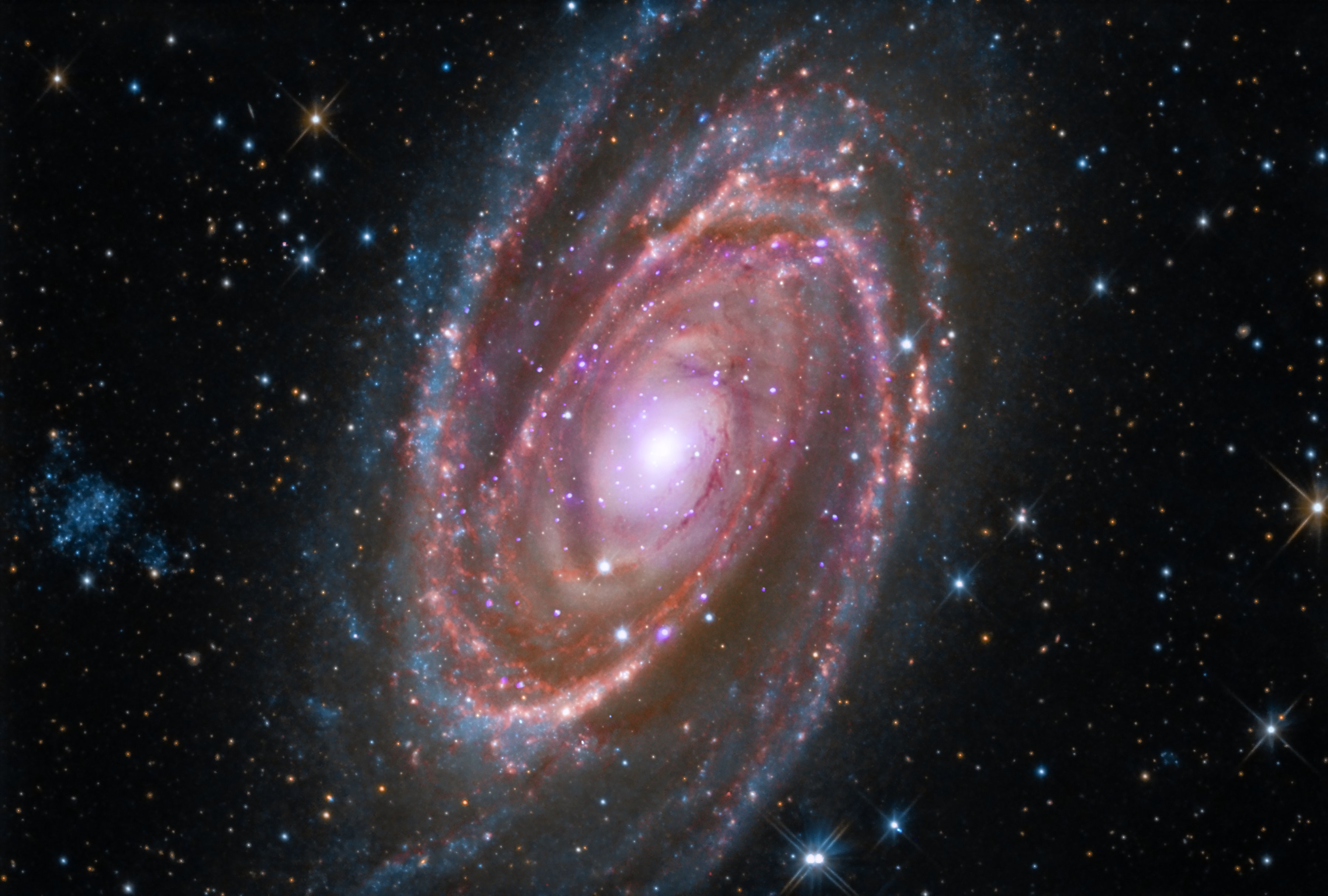Scientists got a strange sense of déjà vu when they took a close look at a mysterious series of bright flashes in a galaxy just 12 million light-years away.
The flashes, known as a repeating fast radio burst (FRB), appear surprisingly similar to flashes found in the Crab Nebula. The Crab Nebula is a famous remnant from an old stellar explosion, or supernova, that humans observed in 1054 AD, which was recorded by several distinct cultures. The colorful remnants have displayed bright and brilliant flashes that look a lot like the newly found FRBs, which occurred in the galaxy M81, researchers said.
“Some of the signals we measured are short and extremely powerful, in just the same way as some signals from the Crab pulsar,” Kenzie Nimmo, a Ph.D. student in astronomy at the Netherlands Institute for Radio Astronomy and the University of Amsterdam in the Netherlands, said in a statement.
Related: ‘Weird signal’ hails from the Milky Way. What’s causing it?
The explosion in what’s now the Crab Nebula was recorded on July 4, 1054, by Chinese astronomers, who saw a new or “guest” star above the southern horn of Taurus. The “guest” shone brightly in the sky for 23 days and was 6 times more luminous than Venus, the astronomers recorded. It was still visible for almost two years after the explosion, and was recorded by Arab and Japanese astronomers as well.
The remnant was best visible with a telescope, and that meant the remaining nebula was only spotted for the first time in 1731 by British astronomer John Bevis. French astronomer Charles Messier independently observed it 27 years later and added it to his now-famous catalog of Messier objects, designating the nebula as Messier 1 or M1.
And it wasn’t until the 1960s when astronomers noticed a fluctuating radio source that coincided with the location of the Crab Nebula and eventually determined that the signal came from a pulsar, a kind of neutron star (itself a super-dense stellar corpse left by a supernova) with a strong magnetic field.
But despite the known cause of the Crab Nebula’s bursts and their similarity to those seen in M81, astronomers aren’t sure yet what’s happening in galaxy M81. These FRBs were first spotted in January 2020, coming from the direction of the constellation Ursa Major, the Great Bear.
To date, FRBs have mostly been found in galaxies studded with young stars, but the M81 sightings are an exception, since a network of a dozen radio dishes pinpointed the source of the signal quite clearly to an old group of stars known as a globular cluster.
One candidate for explaining FRBs is that these bright flashes come from magnetars — the strongest magnets in the universe and another type of supernova remnant. And this explanation makes sense where young stars are common, but it’s trickier when it comes to M81, the researchers said.
“We expect magnetars to be shiny and new, and definitely not surrounded by old stars,” Jason Hessels, University of Amsterdam and ASTRON, said in the statement. “If what we’re looking at here really is a magnetar, then it can’t have been formed from a young star exploding. There has to be another way.”
One possible explanation might be that a white dwarf (the cooling core of a large burnt-out star) pulled gas off an unlucky neighboring star. Over time, the researchers suspect, the extra mass may have caused the white dwarf to collapse into a magnetar.

All told, although the scientists aren’t positive what caused the signal or why it’s so similar to the one emanating from the Crab Nebula, they suspect the answer is something unusual — whether an unusual magnetar, an unusual pulsar or another celestial phenomenon.
The research was published in two papers Wednesday (Feb. 23): one in Nature Astronomy led by Nimmo, and the other in Nature led by Franz Kirsten, who is with the Chalmers University of Technology and the Netherlands Institute for Radio Astronomy.
Follow Elizabeth Howell on Twitter @howellspace. Follow us on Twitter @Spacedotcom or Facebook.

